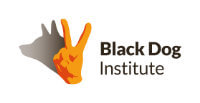What is ‘e-Mental Health’?
“e-Mental Health Services”, as promoted by eMHPrac, are online programs, services, tools or applications that may be self-driven or involve interaction or guidance with a health professional. These services are ideal as standalone treatment interventions for Australians with mild-to-moderate mental health symptoms, or can be used in combination with face-to-face care.
Does ‘e-Mental Health’ include telehealth/telepsychology, i.e. regular mental health care delivered via telephone, video-chat, etc?
No. While the terminology can sometimes overlap, ‘e-Mental Health services’ (as promoted by eMHPrac) do not include services involving regular technology-assisted sessions with a mental health care professional (e.g. regular sessions with a Psychologist via video-chat), apart from Crisis Services such as Lifeline and Kids Helpline (which provide brief, one-off telephone, email and web counselling).
Do e-Mental Health services cost anything?
The majority of the e-Mental Health services promoted by eMHPrac are government-funded and completely free of charge for users. A few programs charge small fee for access, but these costs are minimal, and usually cheaper than the out-of-pocket cost for a single session with a Psychologist.
Can I trust these programs? How do I know they work?
All of the services and resources promoted by eMHPrac have been funded by Commonwealth or State/Territory Government and have been through a rigorous testing and evaluation process. Evidence shows that for many people digital based mental health treatment can be as effective as face to face treatment 1 2. Visit our Service Directory to read the evidence for each individual service and any related publications.
As a general rule, health practitioners should independently investigate, evaluate and verify the content and credentials of any service or resource before choosing to use it or refer a user to it.
1 Andersson, G. & Hedman, E. (2013) Effectiveness of Guided Internet-Based Cognitive Behavior Therapy in Regular Clinical Settings. Verhaltenstherapie. 23:140-148. 5.
2 Titov N. Computer therapy for anxiety and depressive disorders is effective, acceptable and practical health care: A meta-analysis. PLoS One 2010;5(10):e13196. doi: 10.1371/journal. pone.0013196.
I am a Health Practitioner wanting to refer some of my clients to these services. How do I know which service to pick?
You can search our Service Directory to find a suitable service based on the client’s mental health issue (e.g. depression, anxiety, PTSD), their demographics (e.g. older adults, LGBTQI clients, Indigenous and CALD clients), and/or the delivery format of the service (e.g. online program, app, phone/online counselling, etc). Once you’ve narrowed down a selection, it’s a good idea to log in to the programs yourself to have a look around and get a sense of the user experience. Some programs will require an email address and some brief details to access the content. If you are unable to access the program for any reason, feel free to contact the program developers (their details should be easily accessible on the program’s website) to ask for some screenshots or slides so you can see the ‘inside’ of the program.
How long are people meant to use e-Mental Health services for?
Some e-Mental Health services are designed for brief, one-off intervention (e.g. crisis lines, online counselling, information websites, forums), and it is intended that individuals access these services on an as-needed basis. In comparison, many self-guided online programs and apps are designed as a full treatment intervention, and to get the full benefit from them, individuals are recommended to use them regularly (roughly once per week) for around 2-3 months. This allows enough time to consolidate the information, strategies and concepts learned, and to put them into practice in everyday life. After this period, individuals can then revisit the program or app as little or as much as they like to refresh their skills.
Are e-Mental Health services meant to replace face-to-face treatment?
It depends on how they are intended to be used. For individuals with mild-to-moderate mental health symptoms, e-Mental Health services have been demonstrated to be very effective in reducing symptoms. In these cases, e-Mental Health services may be able to replace the need for face-to-face treatment for many people. However, for individuals with moderate-to- severe or complex mental health issues, e-Mental Health services may not be suitable as a standalone treatment intervention. However, in these cases, they may still be used as an adjunct to face-to-face treatment, e.g. as homework tasks or interim support between face-to-face sessions.
My clients are not very good with computers. Can they still use these services?
Most services have been designed to be user-friendly, even for those unfamiliar with computers and technology. However, the best option for clients who aren’t confident with technology is for their healthcare practitioner to spend some time going through the recommended e-Mental Health program/s with them during a consultation. It is recommended that healthcare practitioners look through and test out the programs themselves beforehand, if possible, to ensure they are as familiar as possible with the programs before going through them with clients.
My clients are from CALD backgrounds, or have difficulty with English. Are these services suitable for them?
Several services have their program available in several languages (e.g. Chinese, Arabic), and some services have created programs specifically for Indigenous clients or clients from other cultural backgrounds. To find these services, visit our Service Directory and search for ‘Indigenous and Other Cultural Services’ in ‘Target Group’.
Can kids/young people use these services?
Yes. There are many programs and services available that have been specially designed for kids and youth as young as three years. To find these services, visit our Service Directory and search for ‘Child and Youth Services’ in ‘Target Group’. Most of the programs and services aimed at adults will also be suitable for older teens (16+). If you are a healthcare practitioner and are unsure about the suitability of a particularly program, visit the program and have a look through it first, or contact the program developers.
Need help?
If you would like to know more about eMHPrac and e-mental health training please contact us via sending the contact form or a direct email to emhprac@qut.edu.au.





